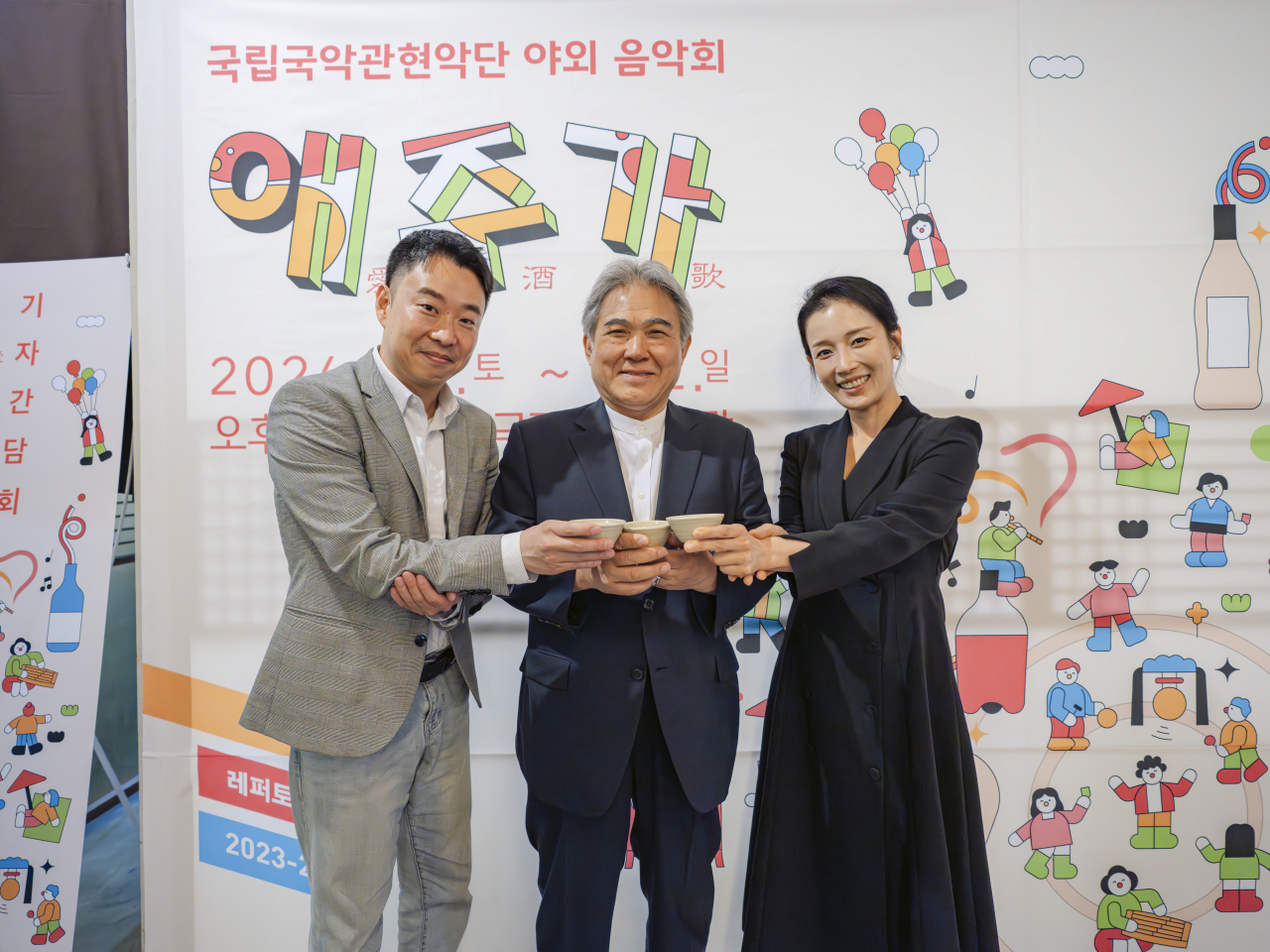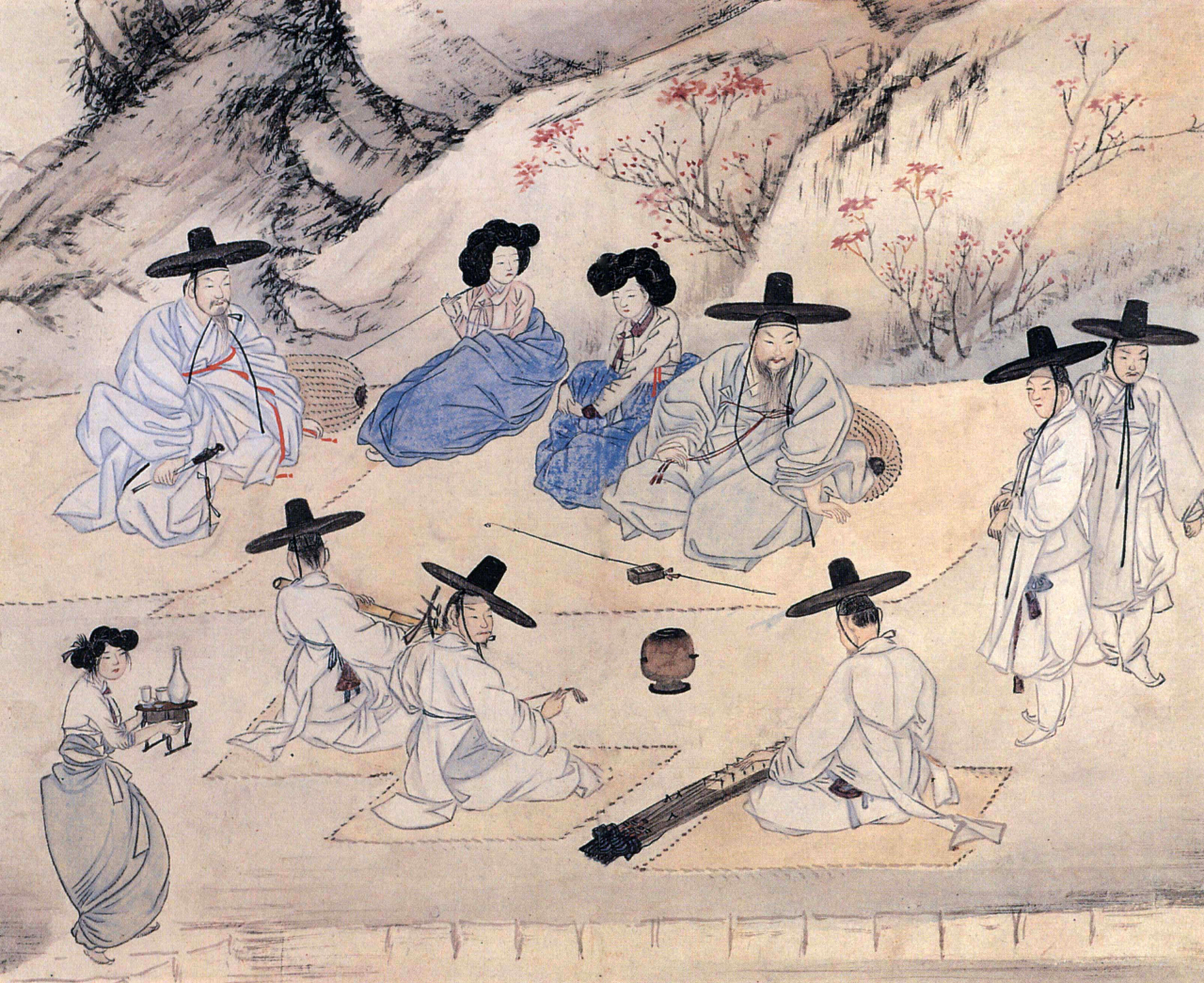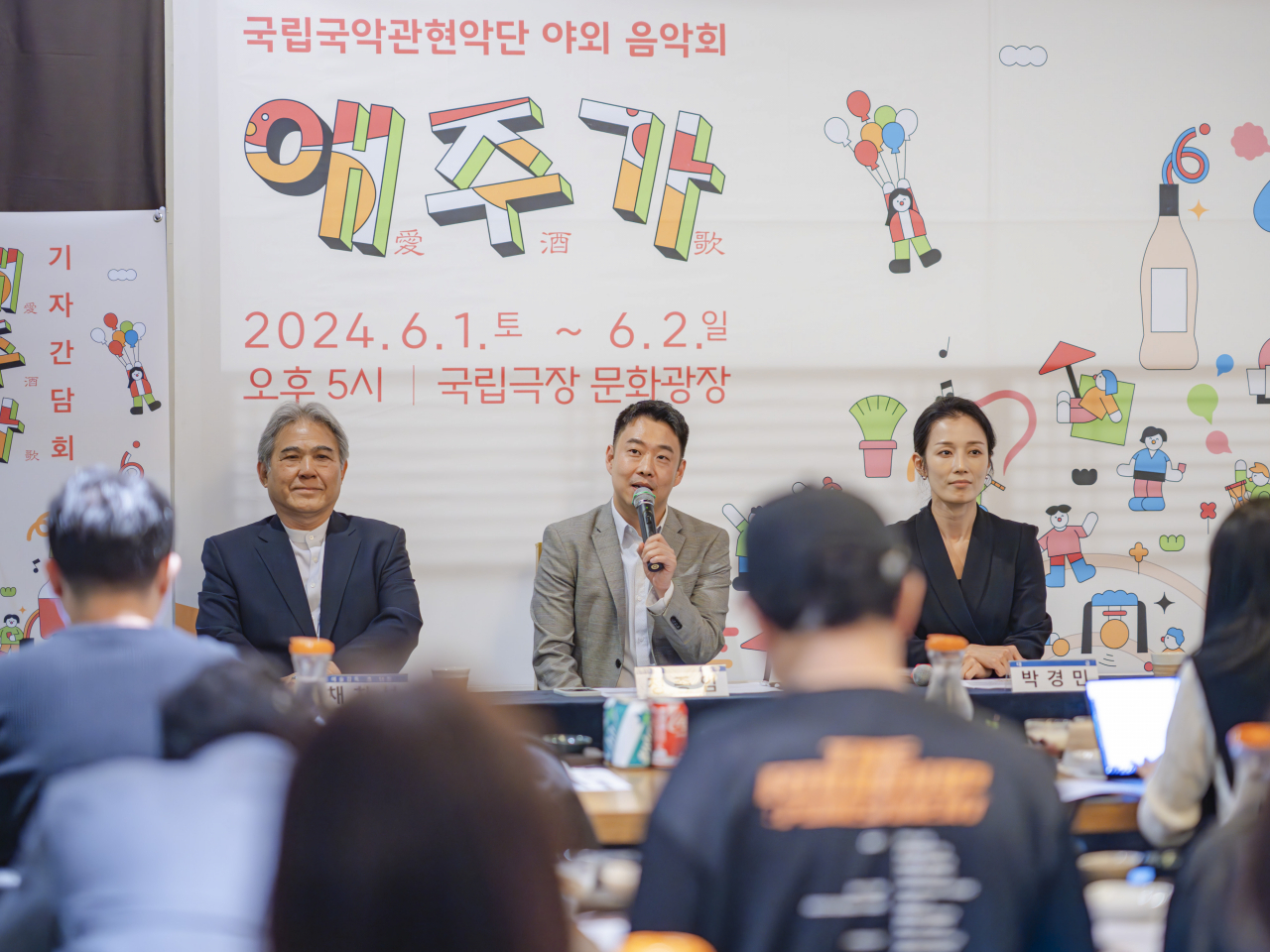
“Pungnyu” in Korean literally means “wind flowing.” It encompasses a multifaceted concept such as harmony with nature, artistic flair, musical appreciation, leisurely stylish indulgence and being free-spirited enough to revel in life’s pleasures.
During the Joseon era (1392–1910), the aristocracy considered entertainment as a chance to visit majestic mountains and pristine rivers, and write verses describing nature's beauty and their sentiments, accompanied by music, dance and liquor.
This spirit of pungnyu is set for a revival this summer at the base of Namsan.
The National Orchestra of Korea, a traditional Korean music orchestra under the National Theater of Korea, is gearing up for an outdoor concert titled "Aejuga -- Tunes and Wines," combining traditional liquor and traditional music.
The concert is scheduled for June 1-2 at the Cultural Plaza in front of the Haeoreum Grand Theater at the National Theater of Korea in Jung-gu.

"From the old paintings, we can see our ancestors enjoyed pungnyu, engaging in poetry writing, music, singing and dancing -- with a drink. This concert will be a chance to bask in the elegant style of traditional pungnyu," said Chae Chi-seong, the artistic director of the NOK, during a press conference held at Gangnam's Kooksoondang Brewery on Monday.
“The National Orchestra of Korea has rarely performed outdoors. When it comes to indoor performances, audiences tend to watch in a rigid state. But we can say that our music is meant to be experienced amid nature,” Chae said.
Two stages will be installed against the scenic backdrop of lush forests: one main stage for the full traditional orchestral music, and the other, a smaller stage for chamber music and solo performances.

Five varieties of traditional alcohol are paired with five compositions. For example, the melodious strain of “Sinnaerim (Spirit Possession),” a familiar melody to Koreans, is complemented by draft makgeolli (rice wine) and old makgeolli (restored to the 1960s style). For the daegeum solo piece that showcases its pure sound, bekseju (infused with ginseng and other herbs) with a clear taste is recommended. For the grand finale, "New Baet-nori (New Boating Song)" is paired with songjeolju, (made from pine tree joints) evoking the fragrance of pine trees, explained director Jeong Jong-im.
“We envisioned a festival-style concert akin to jazz festivals, where everyone could revel in a traditional music orchestra,” said Jeong.
In particular, the new composition “Gwonjuga” (drinking song), which drew inspiration from many gwonjuga tunes transmitted orally through pansori and folk songs from different regions, will feature orchestra members imbibing while performing -- like drinking together with the audience.
“It will be a sensory feast. I hope the audience can experience and indulge in the taste of traditional liquor and traditional music in a relaxed atmosphere,” said the daegeum player Park Kyoung-min.
Admission will be open seating, with yeopjeon, or traditional brass coin, provided for alcohol exchanges per seat. While tickets are 30,000 won ($22) for all seats, discounts will be available for minors or those who do not wish to drink.
The production team expressed their hopes for good weather, adding that if it rains, they would have to assess the situation on-site depending on the amount of precipitation that day.
![[Grace Kao] American racism against Stray Kids](http://res.heraldm.com/phpwas/restmb_idxmake.php?idx=645&simg=/content/image/2024/05/13/20240513050827_0.jpg&u=)




